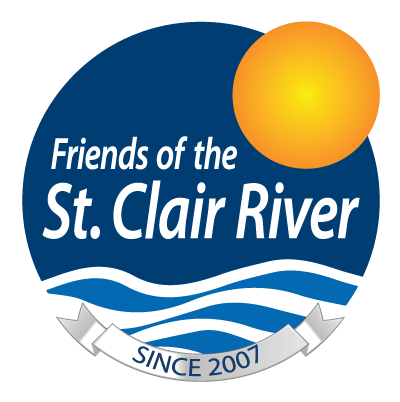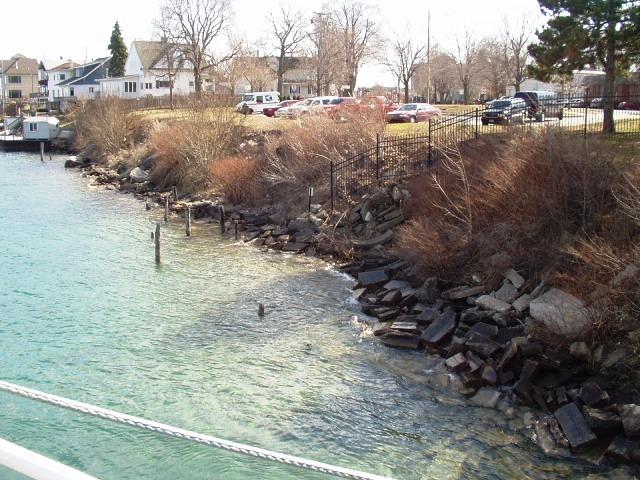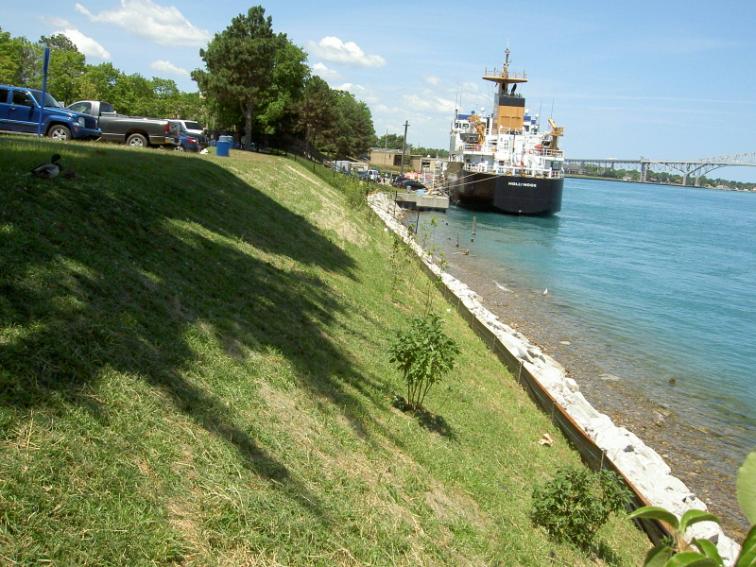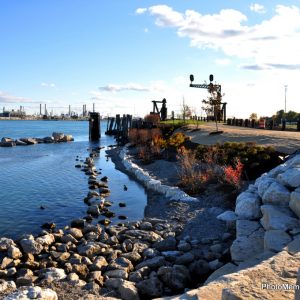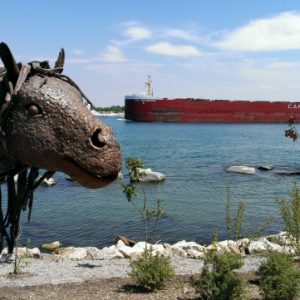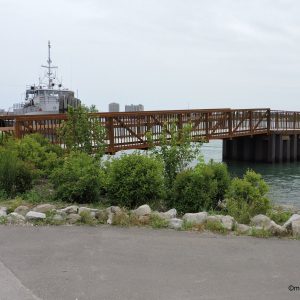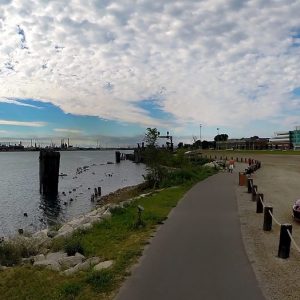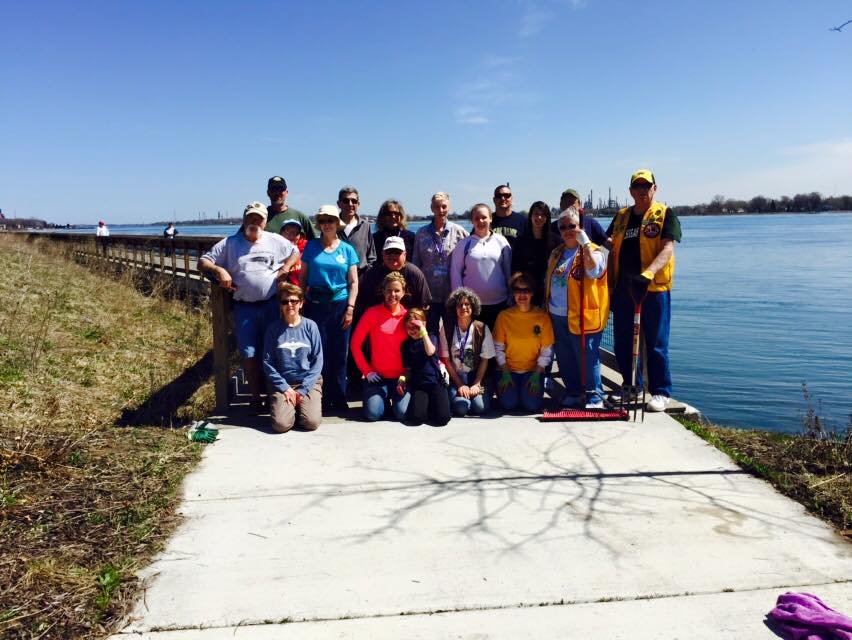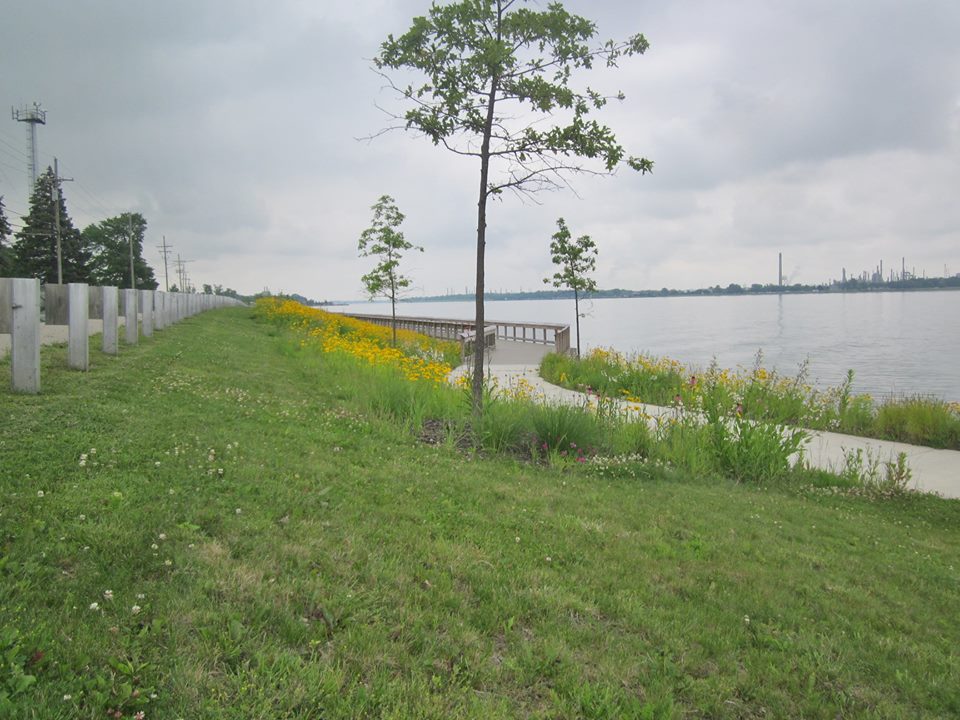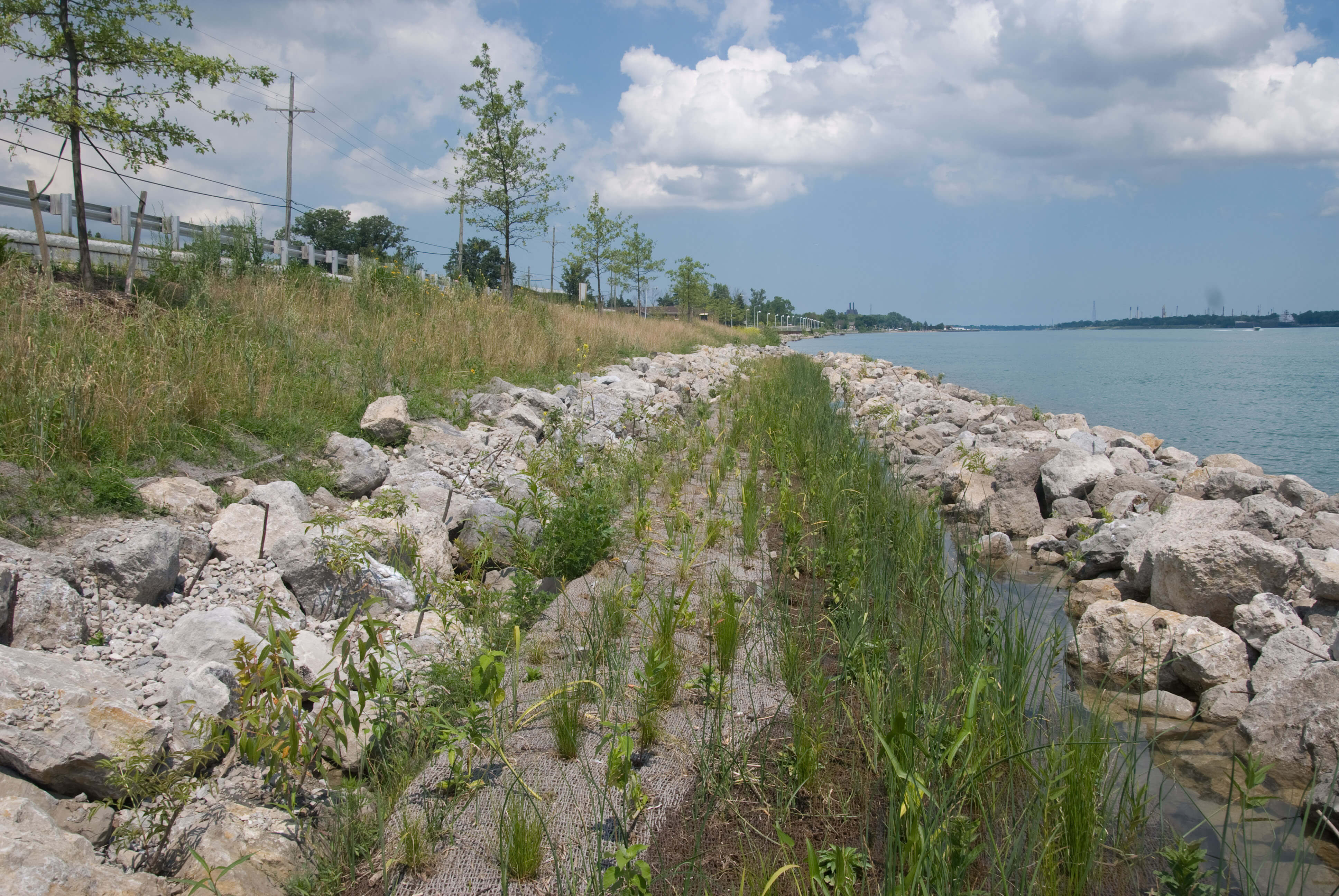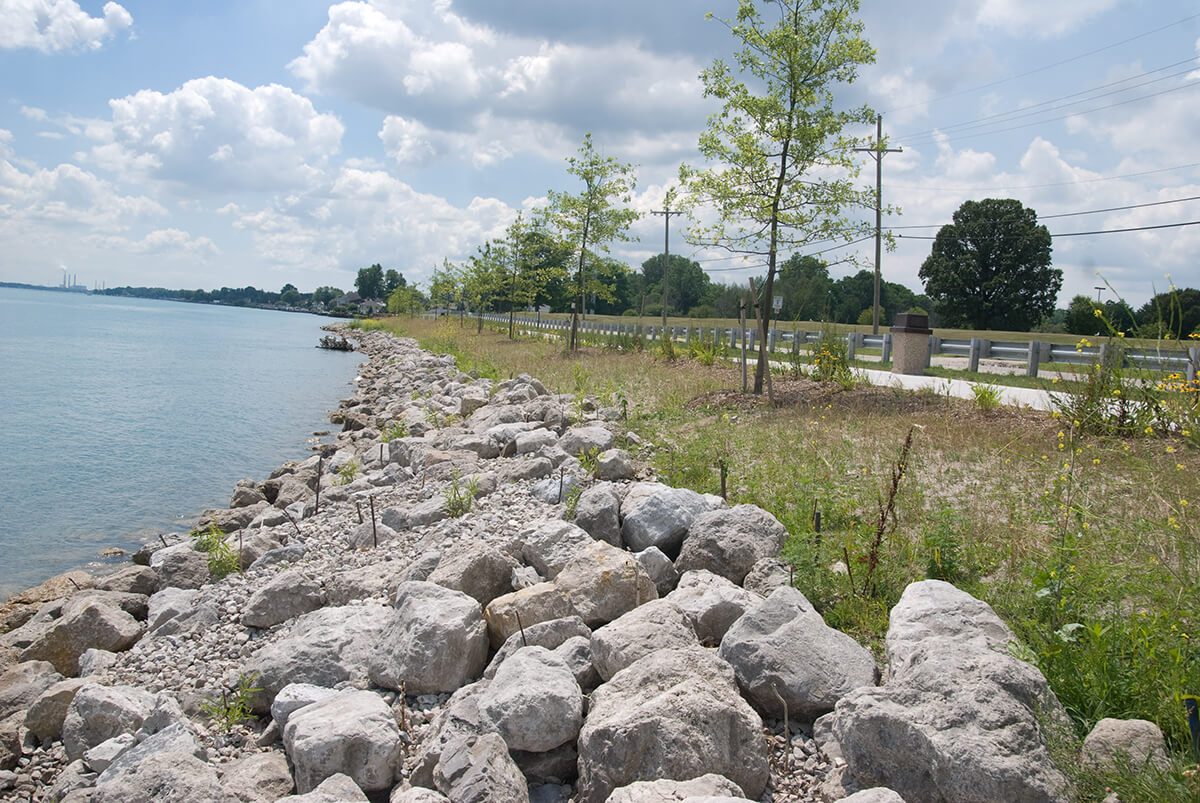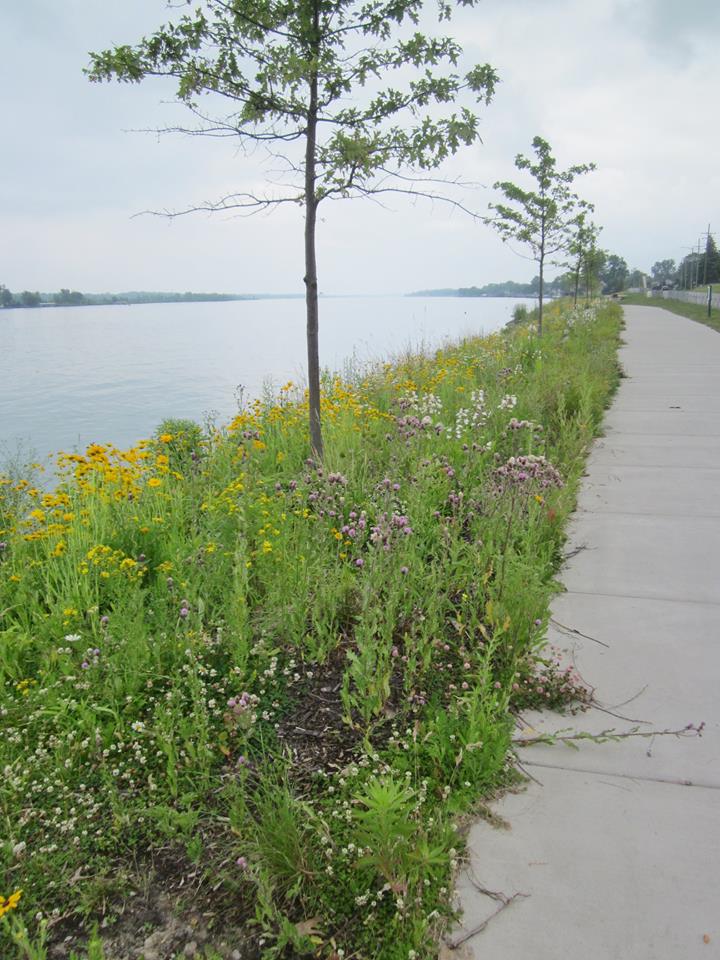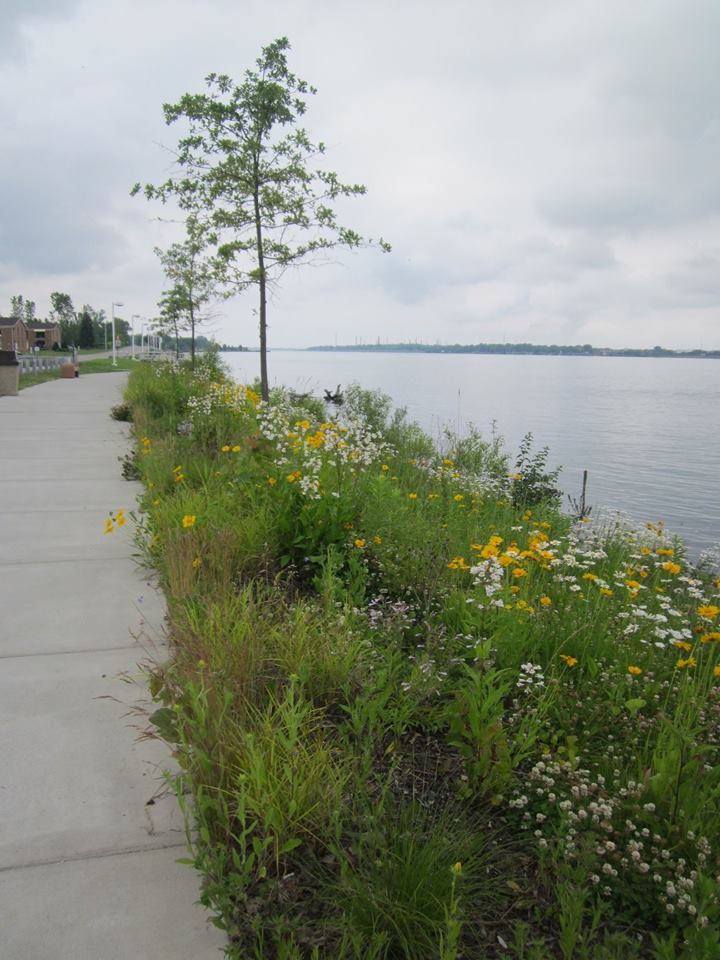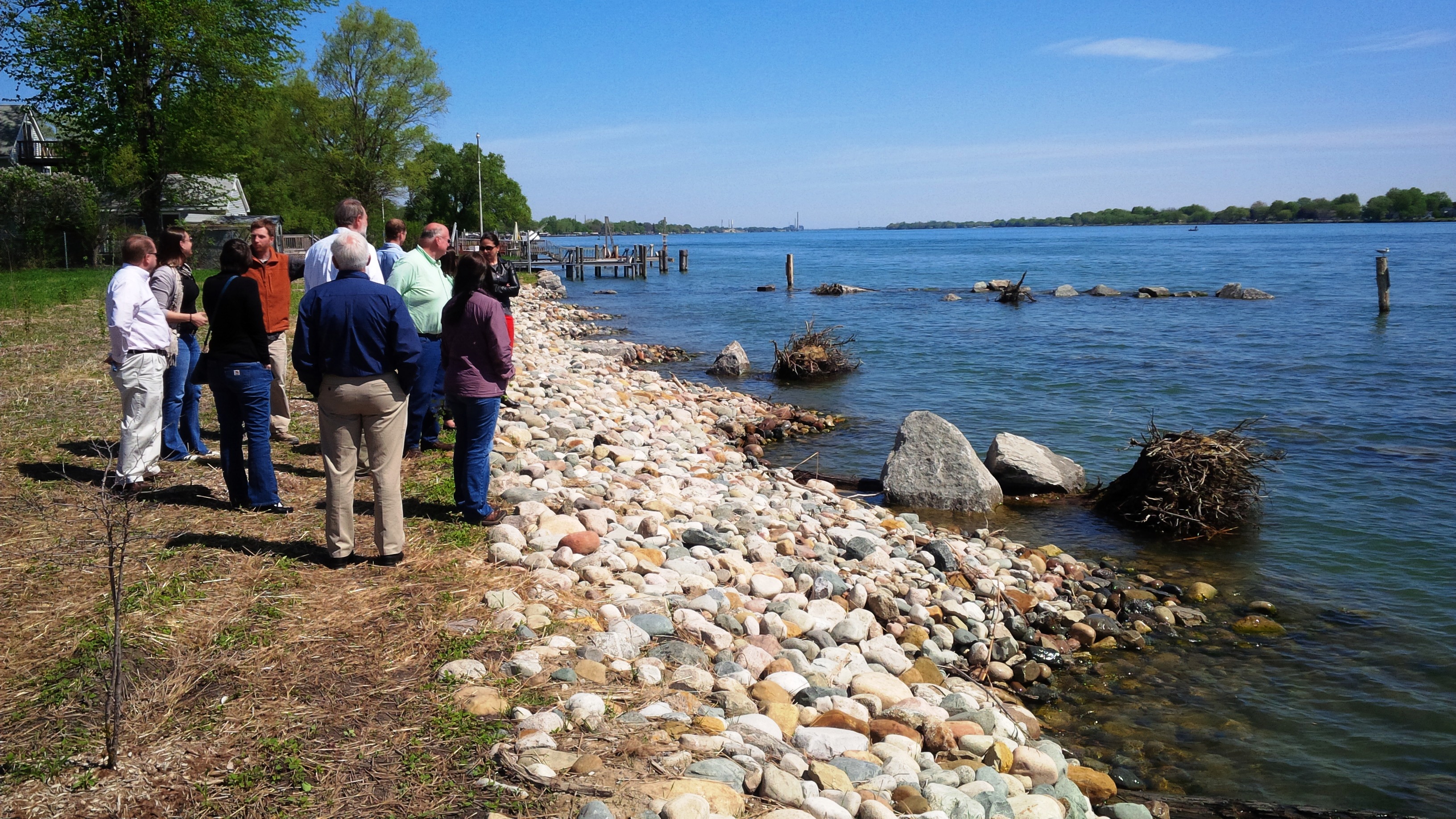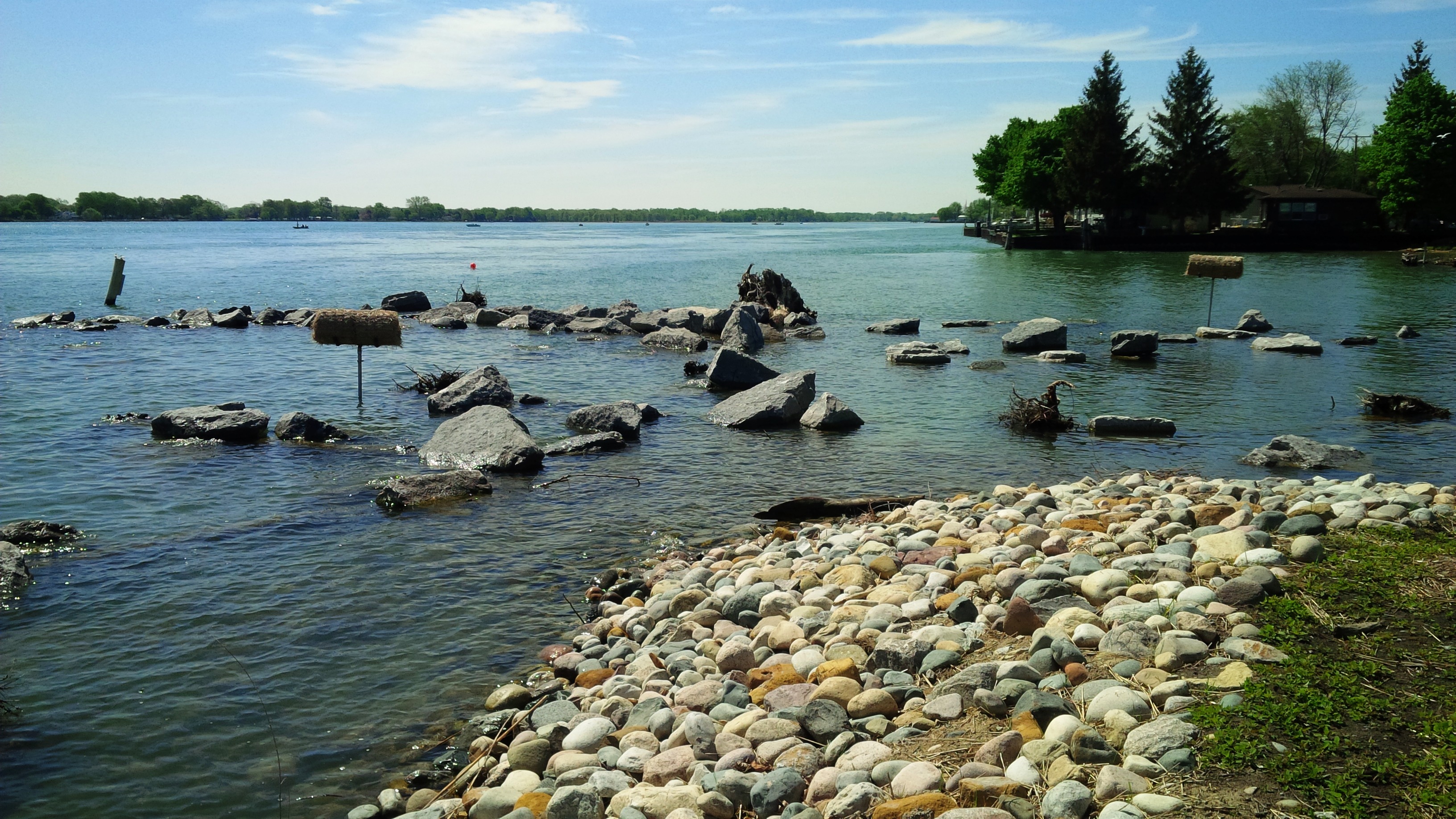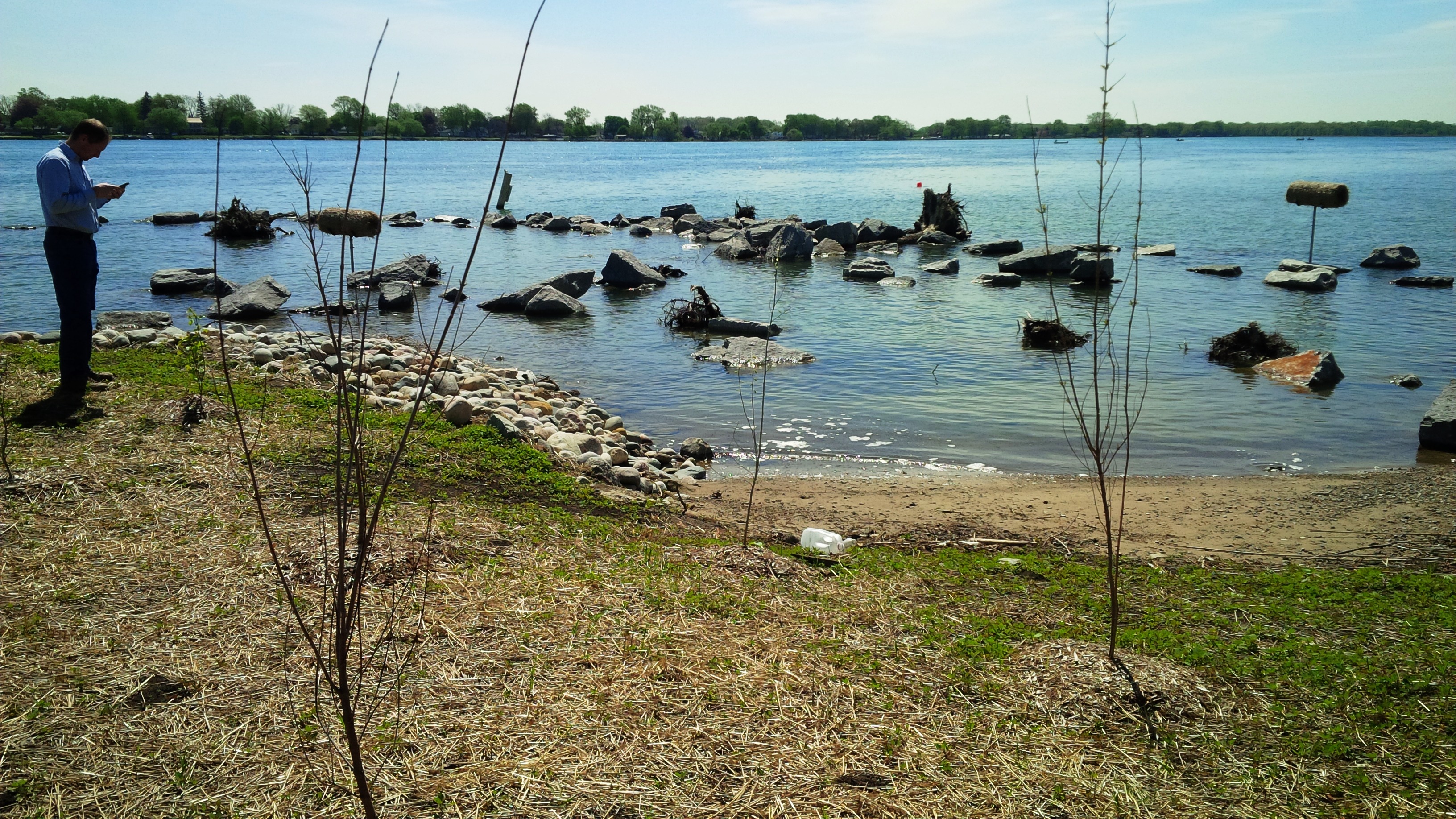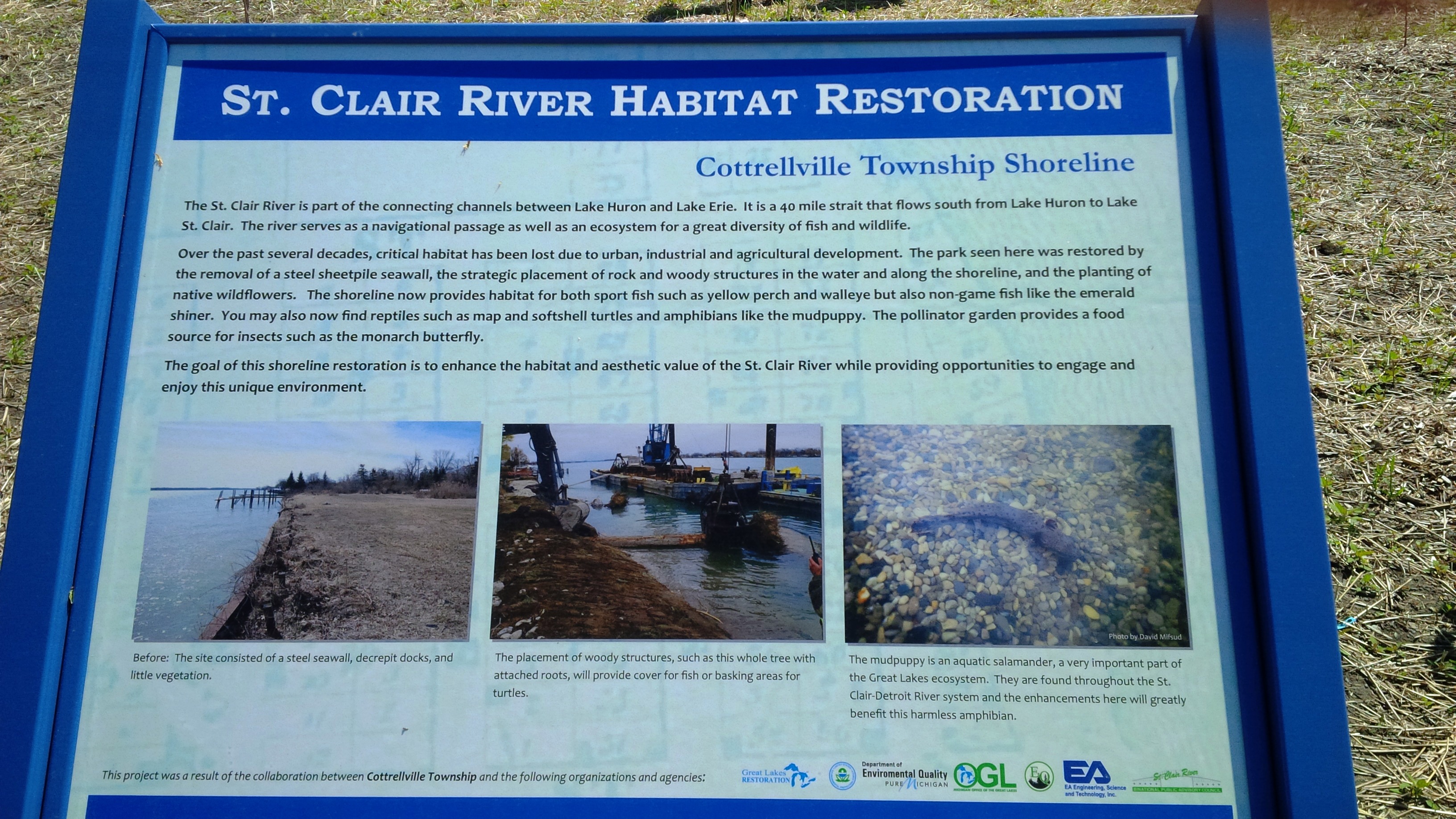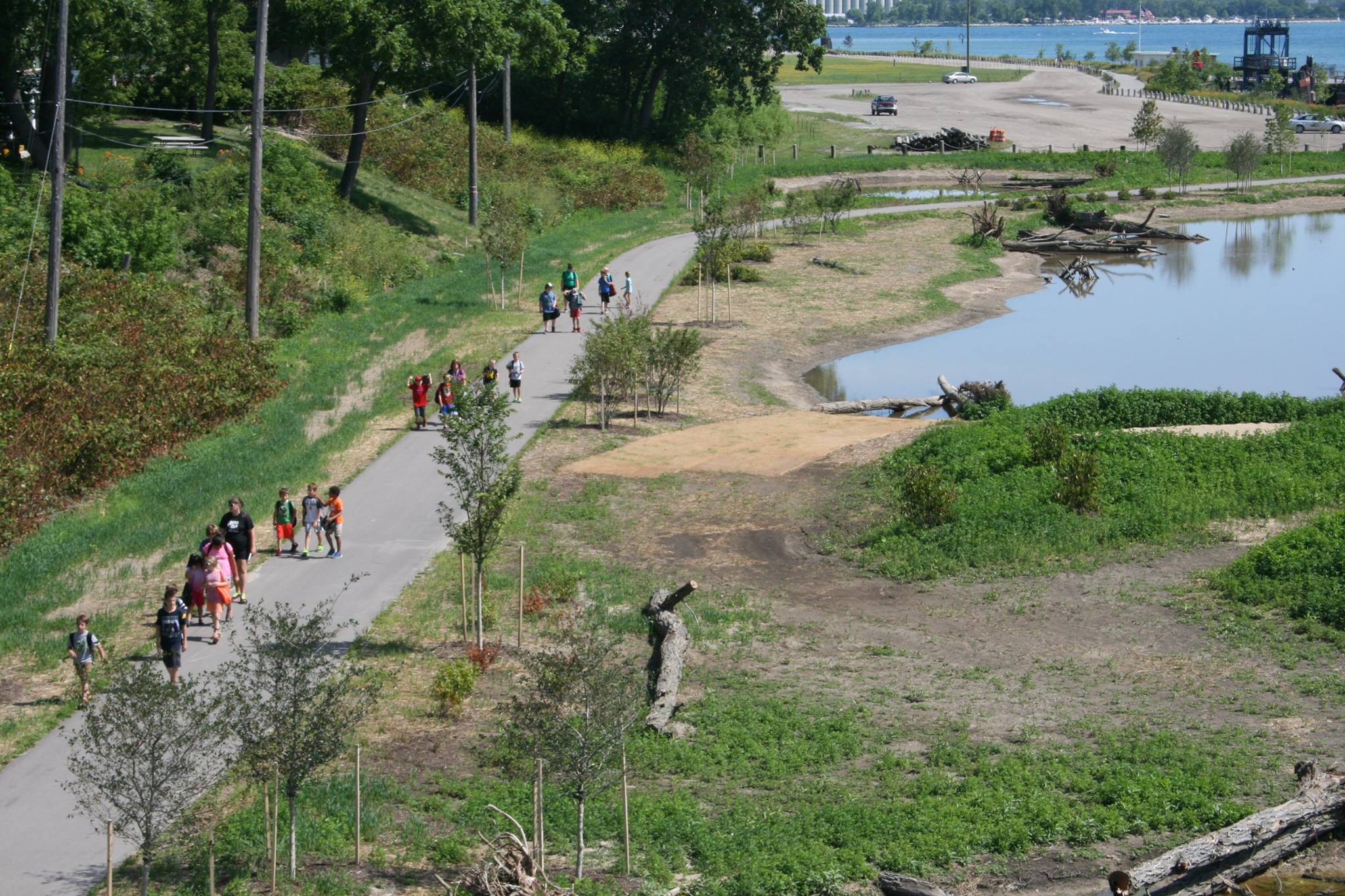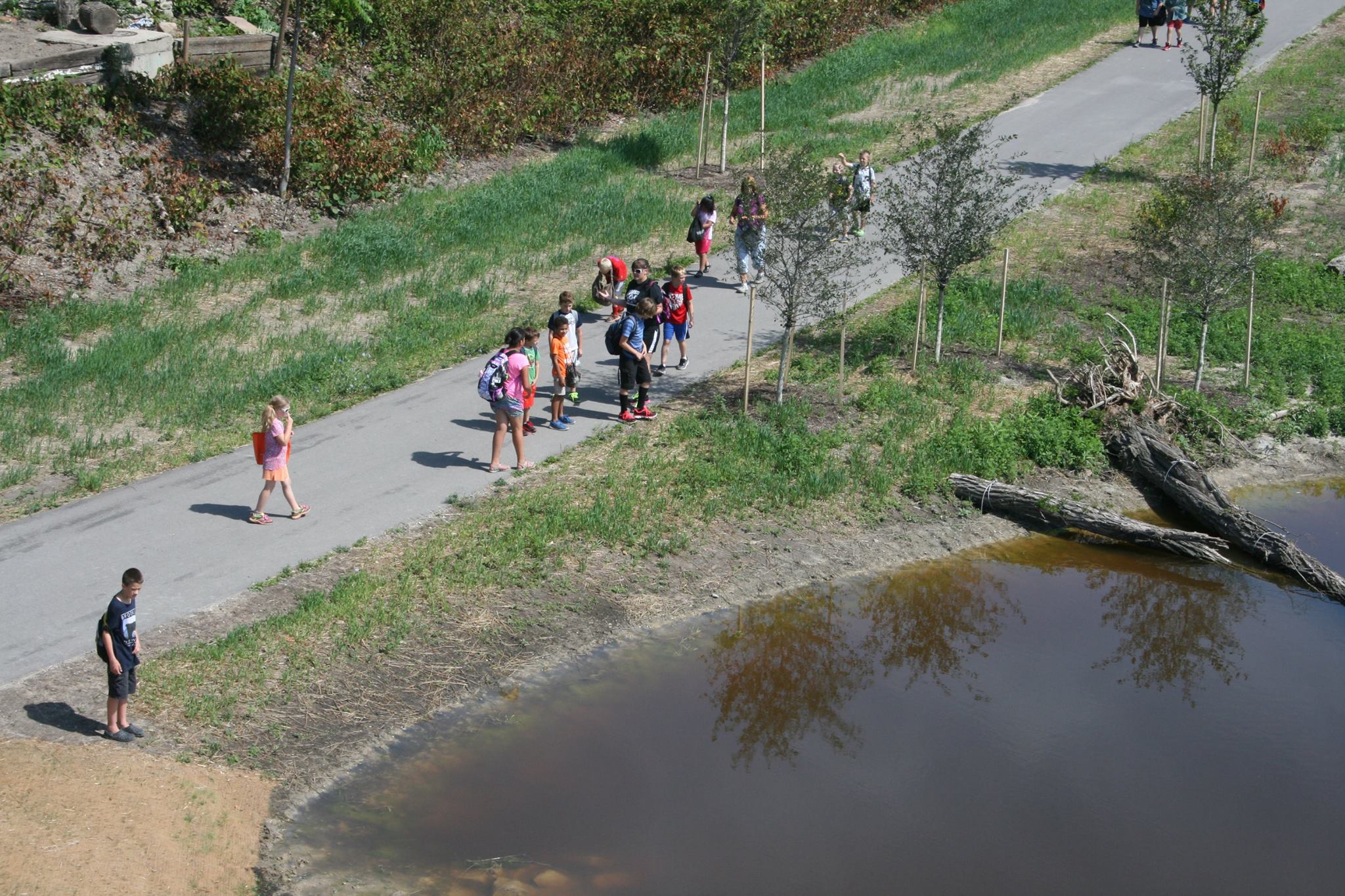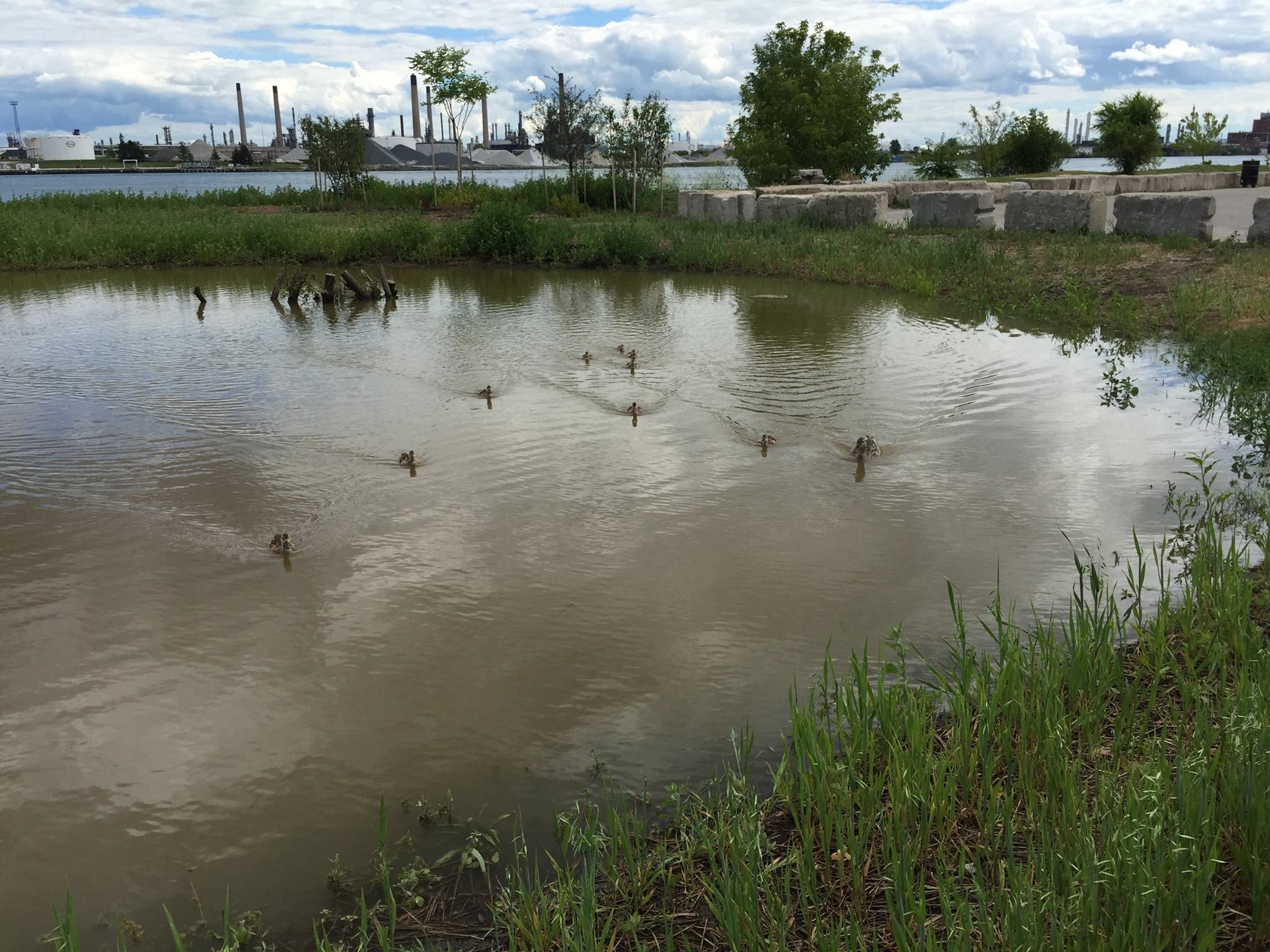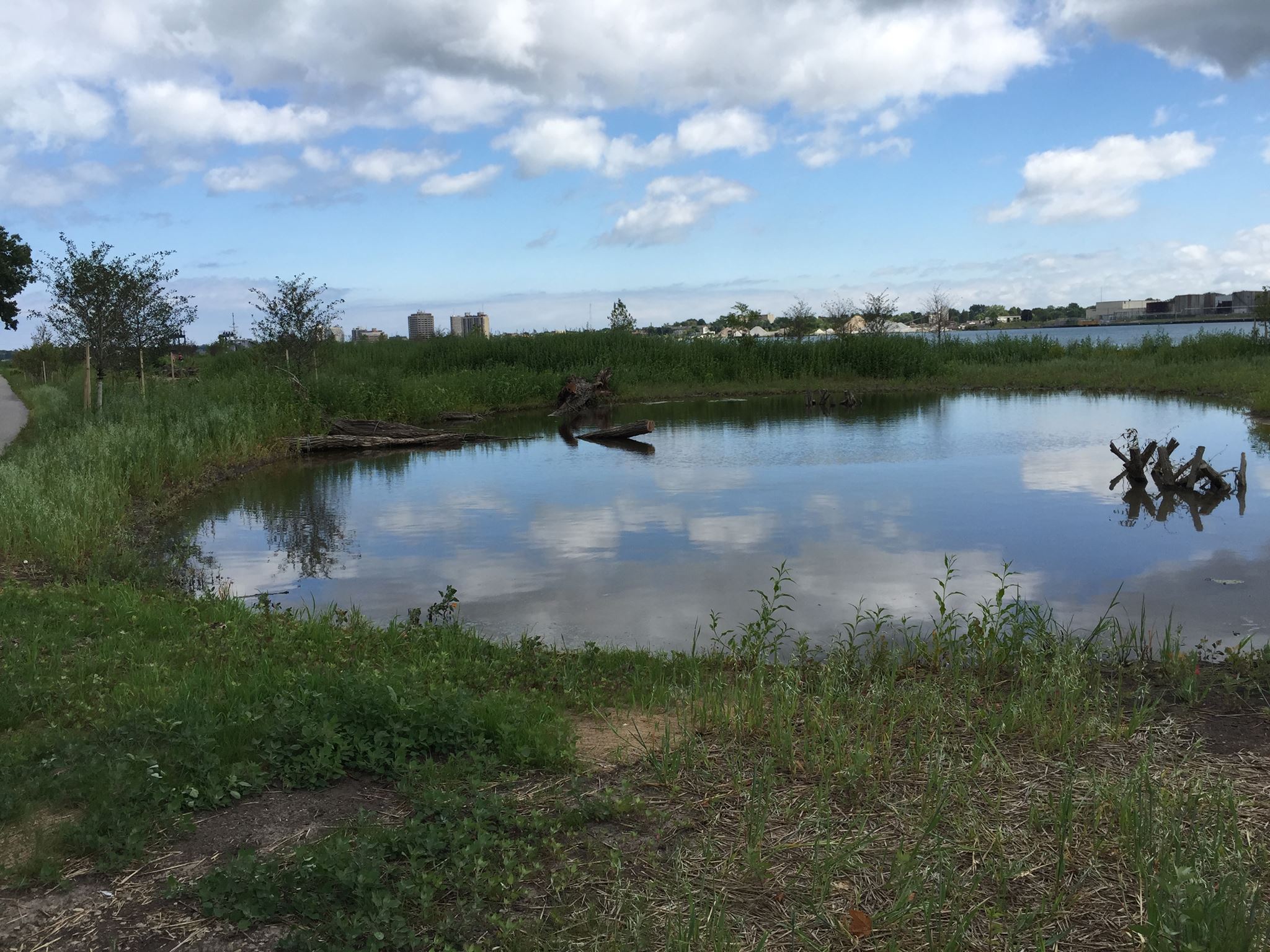St. Clair River Projects
Port Huron North:
Near Pine Grove Park, just south of the Hollyhock, the shoreline restoration was completed in 2012. The project was led by the city of Port Huron.See Fact Sheet
Blue Water River Walk
This major habitat restoration project along the St. Clair River in Port Huron began in 2010. Desmond Landing started out as a mile-long stretch of industrial wasteland, but when this project finished in June 2014, it became a beautiful shoreline with suitable habitat for fish and wildlife. With a restored and naturalized shoreline, the River Walk is safer and has more places for public to access the water in this primarily urban landscape. Native plants are critical to this habitat project in that they will produce the most suitable habitat for native fish and wildlife and offer protection for the shoreline. This is one of nine projects completed under the “DELISTING TARGETS FOR LOSS OF FISH & WILDLIFE HABITAT BENEFICIAL USE IMPAIRMENT OF THE ST. CLAIR RIVER AREA OF CONCERN” that gets us one step closer to removing this BUI from the St. Clair River.
Maintaining a beautiful shoreline by keeping invasive plants in check so that native plants can flourish is an ongoing project.
Blue Water River Walk Fact Sheet
St. Clair Community Foundation Blue Water River Walk website
Marysville's Living Shoreline
Marysville Fact Sheet 1
Marysville Fact Sheet 2
In-River Habitat Restoration:
These artificial reef habitats for fish are in the St. Clair River near Algonac. At least one habitat was finished in 2013. Two reef habitats were completed in summer 2014 near Algonac Hart’s Light at Marine City.Reef Creation Photo Album
Restoration Project Update
MI SeaGrant: Videos of reef construction
Restoring Fish Habitat in the St. Clair River Fact Sheet
